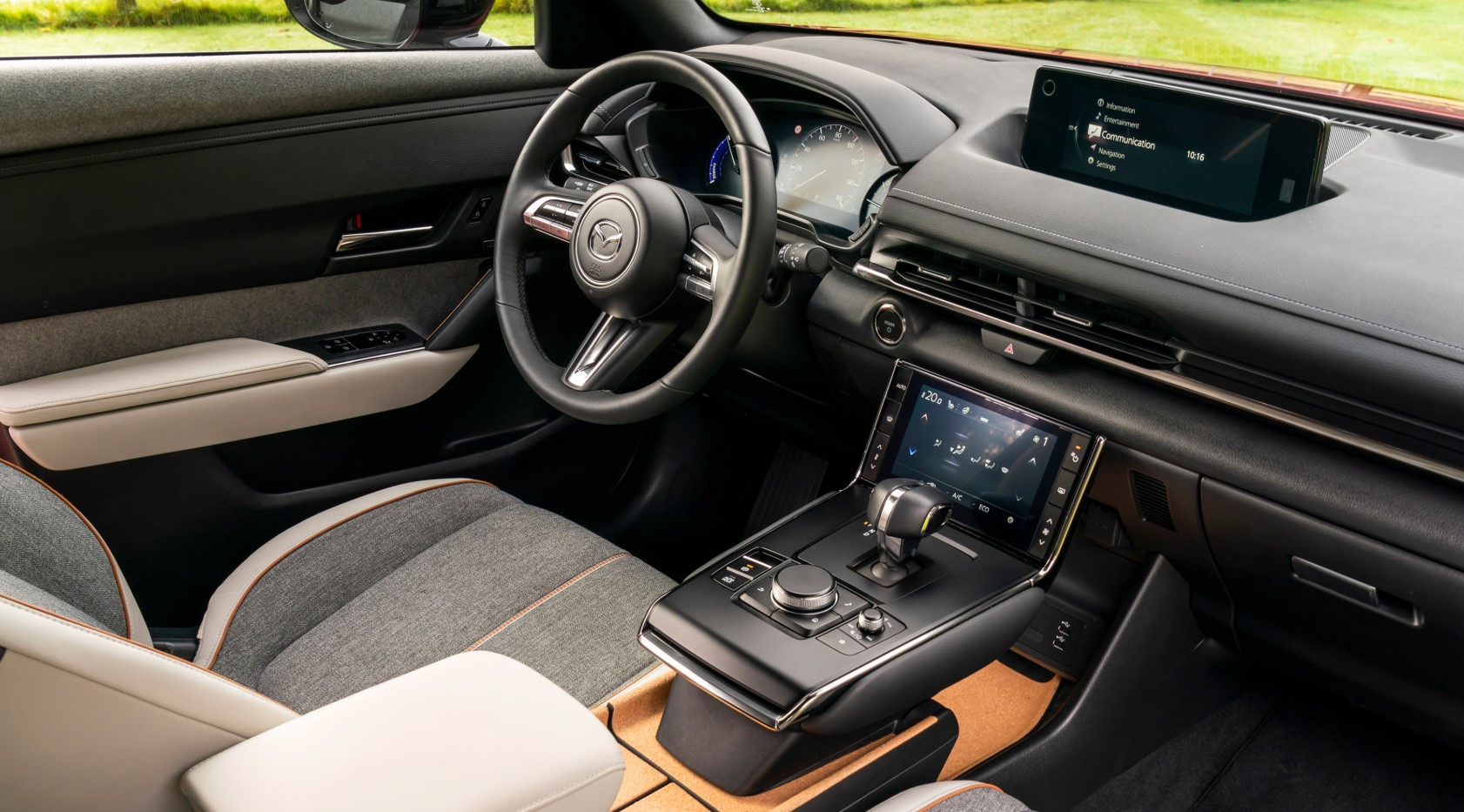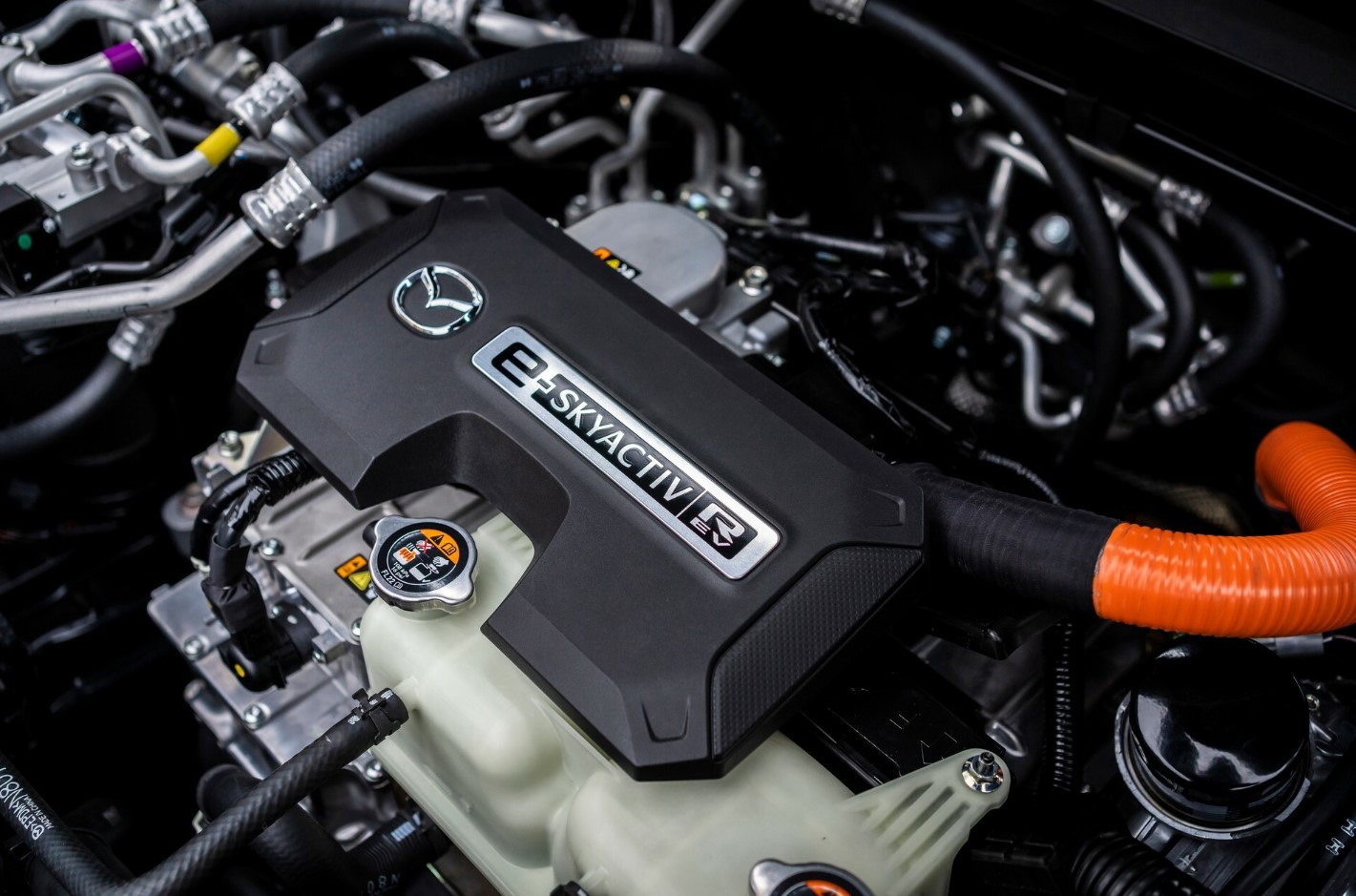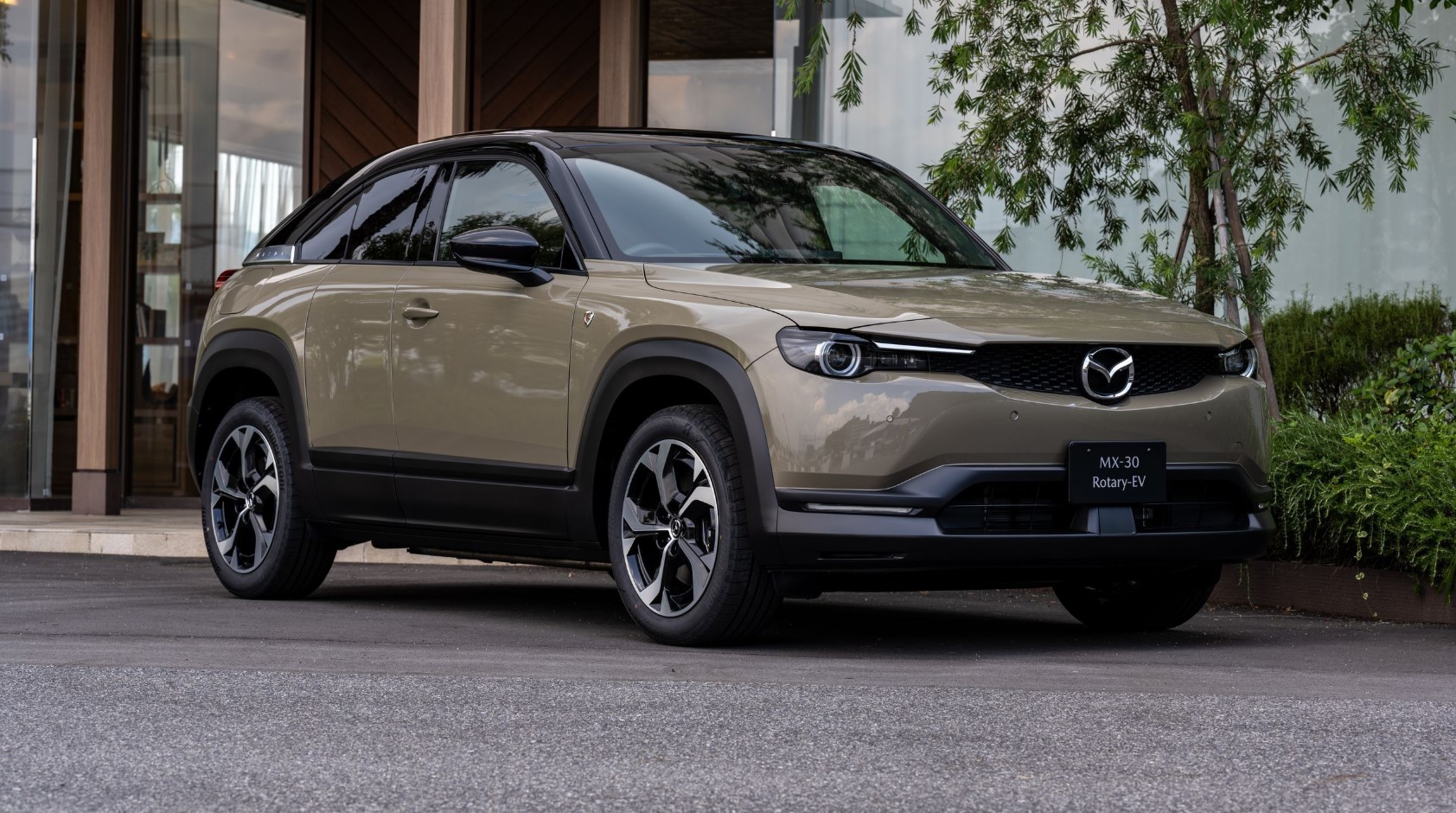2027 New Mazda MX-30 Review, Specs, Dimensions – The 2027 Mazda MX-30 enters the next chapter of its evolution with a full redesign that finally aligns its aesthetics and functionality with the demands of a growing EV market. This isn’t a mild facelift—it’s a major overhaul, reworking the platform, dimensions, and technological depth to deliver a more competitive product. Mazda has reengineered the MX-30 to sit on a new scalable Skyactiv EV architecture, which supports better range, faster charging, and improved weight distribution. This modular platform now accommodates all-wheel drive and future battery innovations, setting the tone for upcoming electric models. 2027 New Mazda MX-30 Review
2027 New Mazda MX-30 Redesign and Update Plan
Exterior & Interior
The 2027 MX-30 takes Mazda’s Kodo design philosophy to a new level, emphasizing sleek simplicity fused with purposeful detailing. The body has a more aerodynamic shape with flush door handles, a closed grille that seamlessly merges into the lighting elements, and vertical air intakes integrated into the lower bumper for brake cooling. The rear boasts a sculpted tailgate, ultra-slim taillights, and a re-profiled roofline for better airflow. New alloy wheel designs up to 20 inches are available, contributing to an athletic profile that distances itself from the prior generation’s compact, quirky stance.
Inside, the 2027 MX-30 has been entirely reimagined with sustainability and luxury in mind. The cabin blends premium natural materials with recycled textiles and new-generation vegan alternatives. Cork trim, a Mazda hallmark, continues to be used but now with water-resistant finishes and antibacterial properties. The driver-focused cockpit features a new 12.3-inch curved digital cluster paired with a floating 14-inch infotainment display, all run by an updated Mazda Connect system. Touch-sensitive climate controls have been relocated to a center touchscreen flanked by haptic dials, offering intuitive access without excessive clutter.
Cabin spaciousness is improved due to the longer wheelbase and restructured battery floor, delivering increased legroom and a flatter rear bench. Rear access has also been made more practical through an updated hinge system and wider opening angle on the rear-hinged doors. Storage solutions are smarter, with under-floor compartments and adjustable cargo shelves in the trunk area. Even ambient lighting has been rethought, with bio-sensitive tones that shift based on time of day or drive mode. This cabin doesn’t just look modern—it thinks modern.
The updated exterior design reflects a more assertive and aerodynamic character. While the freestyle rear doors remain as a nod to the original’s uniqueness, the silhouette is sleeker with crisper lines and reduced drag. The signature five-point grille is now closed off, serving more as a visual identifier than an air intake, and adaptive LED lighting is integrated more seamlessly into the front fascia. The wheelbase has been extended for better interior proportions, and the ride height adjusted slightly upward to offer improved stance without compromising agility.
Technological advancement sits at the heart of the redesign. Over-the-air software updates are now standard, as is the introduction of Mazda’s next-gen Human Machine Interface (HMI), enabling more natural interactions between driver and vehicle. Expect improved sound insulation, better NVH control, and smart route planning with real-time range predictions. Mazda is also bringing advanced biometric systems into the mix, including facial recognition-based driver profiles and fatigue detection enhancements.
2027 New Mazda MX-30 Specs
Engine & Performance
Mazda continues to refine its electrification strategy with the 2027 MX-30 by expanding its drivetrain lineup. The standard front-wheel-drive model now uses a 68 kWh battery pack mated to a 201-horsepower single electric motor, delivering 243 lb-ft of torque. Acceleration from 0 to 60 mph is estimated at 7.4 seconds—faster than before but still focused on smoothness over outright speed. The torque delivery is tuned for predictability and urban responsiveness, offering dynamic performance while preserving energy use.
For 2027, Mazda is introducing an optional all-wheel-drive configuration with dual motors, pushing total output to 280 horsepower. This version caters to drivers in colder climates and those seeking a more engaging driving experience. The regenerative braking system has been recalibrated to allow for true one-pedal driving, especially useful in city traffic. The vehicle’s center of gravity remains low thanks to the floor-mounted battery, while a reworked suspension system using lightweight aluminum components sharpens cornering feel without degrading ride comfort.
Perhaps the most anticipated evolution is the return of the rotary range extender. Mazda brings back its compact Wankel engine in a supporting role—not to drive the wheels directly, but to recharge the battery on the go. This rotary engine is ultra-quiet, fuel-efficient, and now adapted to run on synthetic e-fuels for a lower carbon footprint. The range extender version increases real-world usability, especially in regions with sparse charging infrastructure. This combination of pure EV and hybrid-like support gives the MX-30 more versatility than ever before. 2027 New Mazda MX-30 Review
2027 New Mazda MX-30 Fuel Economy
Efficiency metrics for the 2027 MX-30 show clear improvements over its predecessor. The front-wheel-drive electric model offers an estimated range of 260 miles per charge under EPA testing, while the dual-motor AWD variant achieves roughly 240 miles. Thanks to better energy management and lighter components, real-world efficiency now averages 4.0 miles per kWh—well ahead of many similarly priced competitors. The rotary range extender version adds approximately 300 miles of total driving capability with a full charge and a full tank, making it ideal for long-distance and rural users.
Charging speed has improved substantially. The MX-30 now supports 150 kW DC fast charging, replenishing from 10% to 80% in just 29 minutes. Home charging at 11 kW AC will top off the battery overnight with a standard Level 2 charger. Mazda also plans to partner with major charging networks across North America and Europe, offering subscription-based incentives and plug-and-charge compatibility for seamless access.
2027 New Mazda MX-30 Safety Features
Mazda’s commitment to safety takes a notable leap in the 2027 MX-30, with the full integration of i-Activsense 2.0—an evolved suite of driver assistance features. The forward collision mitigation system now includes advanced pedestrian and cyclist detection, even at night. New 360-degree sensors allow for improved automatic emergency braking during parking maneuvers, and updated radar units extend adaptive cruise control functionality up to 110 mph, with enhanced lane-keeping and lane-change assistance.
A standout addition is Mazda’s new Predictive Driver Monitoring system, using facial recognition and eye-tracking to detect signs of fatigue, distraction, or cognitive overload. In cases of critical inattention, the system can safely slow the vehicle and activate emergency signals. Rear cross-traffic alert now includes braking intervention, and the blind-spot system is equipped with an active lane return function. An augmented reality head-up display also delivers live safety warnings and navigation overlays to help reduce driver workload.
Structural enhancements in the 2027 MX-30 further bolster passive safety. The body utilizes a new blend of high-tensile steel and lightweight aluminum crash structures, designed to better absorb and redirect impact forces. The battery pack is enclosed in a reinforced cage with multi-layer fire protection, meeting the latest international safety standards. Combined with post-crash emergency call services and adaptive airbag deployment based on occupant position, the MX-30 meets or exceeds all anticipated global NCAP safety protocols.
2027 New Mazda MX-30 Release Date & Price
Pricing for the 2027 MX-30 is positioned to be competitive in the premium EV compact segment. The base EV model is expected to start around $36,000, while the AWD version may begin closer to $41,000. The rotary range extender variant is projected to start at $44,500, placing it well within reach for buyers seeking flexible EV ownership. Mazda is targeting an official debut in Q4 2026, with deliveries beginning globally in Q1 2027, starting in Europe and Japan, followed by a North American launch shortly after. 2027 New Mazda MX-30 Review


